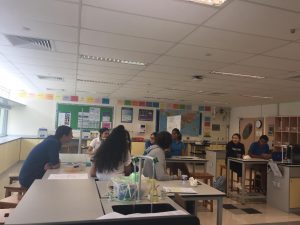Last night (January 25th) was the final show for Kahaani 2018. We performed 2 shows this year, one at 5:30 and one at 7:30. This was my first time doing a live performance during my time in the high school, so I felt very nervous prior to the show. As a group, we practised backstage to ensure that we were completely familiar with all of the steps, and to settle our nerves by restoring the confidence we had as a unified group in our performance. I was very grateful for their being 2 shows, as the first show gave me the chance to gain confidence with the positive reception we received from the crowd, making me feel a lot better for the second show. This was my first time in years performing in front of such a large crowd, but I tried my best not to focus too much on the people in front of me and instead concentrate on what I was doing to ensure that I did not make any mistakes. Having to persevere in spite of my nervousness and take on this challenge of performing in front of a crowd for the first time relates to the 4th CAS Learning Outcome, as I had to persevere a lot more than people with experience doing such performances, and the 2nd CAS Learning Outcome as this entire experience was a new and unique challenge to me. However, I did feel very proud of having the chance to learn an activity that is very traditional to my country, and I hope to apply what I have learned this year to hopefully participate next year as well. Dance is a very unique activity as it combines physical activity with cultural and ethnic origins, and this was really made more apparent to me when I saw the ability of our dance to communicate the message of the service as well as the beauty of my home country, India.
From the perspective of a member of Kolkata GC, I was very proud with the success that the show experienced. Splitting the show into 2 sessions, we feared that less people would be encouraged to come. However, the turnout for both of the performances was excellent and the reception to the dances was even better. I had a lot of responsibilities on top of being an actual dancer in preparation for such a major show, including sorting costumes, putting up posters, and carrying out the duties of the logistics officer of the GC which meant making sure that there were enough people carrying out each of the individual duties. There was a large amount of pressure throughout to do everything correctly, as I knew that making any mistakes could have major implications on the actual show. This relates to the 4th and 5th CAS Learning Outcomes, as I had to work alongside the other members of our GC with commitment in order to ensure everything ran smoothly, and most importantly, served the purpose of the GC to raise funds and awareness for the blind children in Kolkata.
Here is a picture of all of us (my dance) before the first show:




